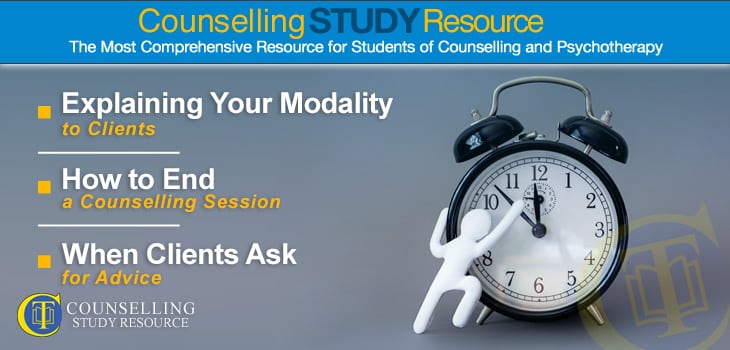Explaining Your Modality to Clients (starts at 1.54 mins)
Ken starts by asking: should we even do so? It is important to explain your modality to some extent at the start of therapy, so that clients can understand what’s on offer and so make an informed decision on whether it is the right approach for them.
Some clients may have experienced therapy before, while others are completely new to it: it matters that clients know what they can expect. Ken and Rory describe how they each explain the person-centred approach to clients.
While person-centred counsellors would not go beyond this to explain the underpinning theory to clients, it is not a taught model.
Some other models, however, are active-directive and it is necessary to teach clients the model in order for the client to be able to benefit from the therapy.
Two examples of this type of modality are cognitive behavioural therapy (CBT – where the therapist would explain the nature of negative thoughts, and how these can affect emotions and behaviour) and transactional analysis (TA – where the therapist would explain the parent-adult-child model).
It can be very tempting in person-centred practice to come out with theoretical terms that you see as relevant to explaining a client’s experience (e.g. ‘condition of worth’ or ‘introjected value’) but doing so would take the client away from their feelings and into their head.
Whatever your modality, it’s important to remember that – as clinical psychologist John Norcross discovered through his extensive research – it is the therapeutic relationship rather than the model that is the most important influence on the effectiveness of therapy.
In transactional analysis, the idea of the ‘relational turn‘ was developed by Helena Hargaden and Charlotte Sills and is described in Transactional Analysis: A Relational Perspective (Routledge, 2002).



